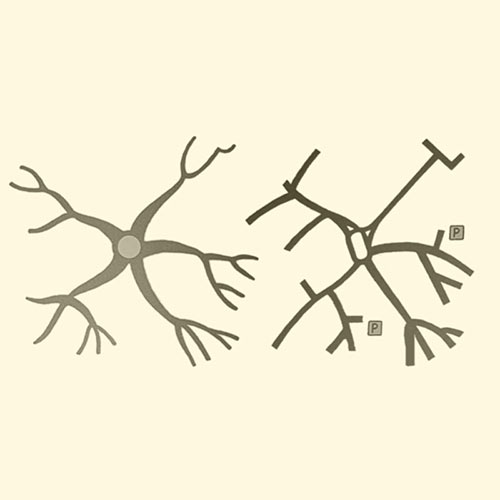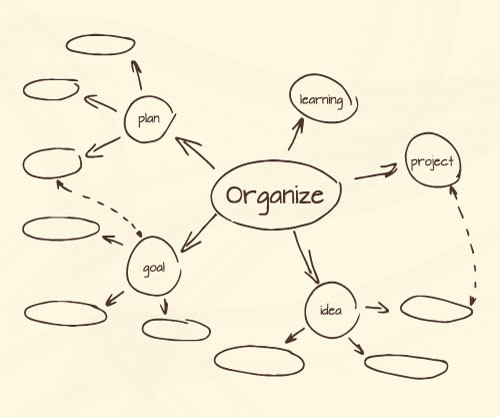The thing that gives me the greatest pleasure in this world is picking up a new skill. Here is my take on learning and memory and its importance beyond education...
For the majority of my life I have obsessively studied one topic or another with the intention of furthering my understanding of the world around me. One particular topic of interest that I keep coming back to time and again is the science of learning.
From a young age I have marveled at the seemingly infinite capacity of the human brain and derived methodologies of harnessing that power. If you were to ask me what superpower I would want, the answer would be access to 100% of my brain's capacity.
It's astounding that a three pound organic mass has computing capacity so far beyond any existing computer technology. In 2013 a top ranking supercomputer with over 83,000 processors was able to match about 1% of what your brain can process... HOLY. SHIT.
To this day, our knowledge of the brain, something that we use every day, is very limited. It was only 1998 when evidence was found that adult humans produced new brain cells. Another discovery, made by the Max Planck Laboratory late in the 20th century, was that brain cells function as independently operating organisms, actively searching for connections.
The adult human brain as somewhere around 100 billion cells, with as many as one trillion synapses(connections), numbers that are difficult to wrap your mind around. The brain trumps traditional computers for this reason: computers process data in a serialized manner (one piece at a time) while the brain is a massively parallel machine that can gather and process massive amounts of data at the same time.

This difference is the focus of many computer science researchers (and something I take great interest in academically). A while back, IBM introduced a computer chip architecture that emulates the way synapse in the brain work called TrueNorth paired with a coding library Corelet to take advantage of the experimental architecture.
Neural computing is in its infancy, but it offers incredible potential in areas like image recognition and power consumption that traditional architectures struggle with. By modeling technology after successful structures already produced by nature, we are a step closer to developing Strong Artificial Intelligence.
But before we start talking about the singularity and the dangers of AI, let's take a step back and get back on topic. How does understanding the brain help with learning? To explain that let's take a look at the honey bee, an insect with a little under one million brain cells. More specifically, let's examine the honey bee's miraculous intellectual feat of daily navigation. Bees, among a host of other complex tasks, can find, memorize, and communicate the location of flowers.
Developing familiarity with the local environment is a vital skill in the survival of nearly all living things. Long before we started recording history, we navigated our environment as migrant hunters. In order to survive, humans had to remember the safe places to sleep and the good places to hunt. This brings us back to learning...
Have you ever compiled a list of things to study and memorize for an exam? Well... You were making it hard on yourself. That's a great way to put information into a computer, but it simply isn't conducive to the way the brain works. Linear memorization is the most common method of teaching in schools today, and I believe that is a reason so many students struggle to learn.

Information is not linear and your brain does not process things in a linear fashion, so the way you learn and catalog information should reflect the way you're wired. Ideas should branch out, dividing and connecting in ways that mimic a city map or the synapses of a neuron.
Introducing: Mind-Mapping
Calling the practice of mind-mapping 'lifechanging' could probably be considered an understatement. Mind-mapping is an intuitive way of taking notes that helps you contextualize and categorize a lot of data in a confined space. It's an invaluable tool of thought for a wide variety of disciplines.
Whether you are designing the data architecture of a complicated web application, learning new material, or just consolidating notes in preparation of an exam. Mind mapping is a fantastic way to organize information in an easily accessible manner. It starts with a core idea at the center of the map, a 'town square' if you will, then branches out into categories and subcategories, forming a sort of 'street map' of the information and its hierarchy.
This radial spread gives mind-mapping an advantage over other note-taking methods for two reasons: firstly, as you spread out radially, you have exponentially more room to write down content, second, drawing connections between items is as simple as drawing a line, no need to rewrite something when a connection is realized.

Here is a very basic example of what the layout of a mind-map could look like, however, the look of the map is only limited by your imagination. By putting more artistic effort into designing your map, you will likely recall the map more accurately.
When mind mapping, it's best to use single words to delineate bigger ideas; lots of words will clog up your map, and make it more difficult to memorize. Each path and intersection of the map is meant to remind you of a piece of information and its context in the big picture.
Beyond note-taking and project planning, mind-mapping can be used to organize other aspects of your life from finances to exercise. I've used it a number of times to help balance out my workload and exercise routine, each time with great success.
A less common practice with the mind map is to associate or design the map in accordance with a familiar environment and imagine walking through it. This takes us into the next great memory technique...
Introducing: The Memory Palace
The memory palace, also known as the mind palace or method of loci, has recently garnered popularity thanks to the intrepid detective Sherlock Holmes. Holmes clasps his hands together, closes his eyes, and walks into a seemingly unlimited labyrinth of memories in a way that makes him appear superhuman. However, such a feat is not as far fetch for the average human as one might think.
The memory palace technique is commonly used by competitive memorizers. When given information in a serial manner, people usually can only memorize between 5 and 9 things, but when they use their spacial thinking capacity, virtually mapping the information in their head, that limit is shattered. This discovery is nicely outlined by Joshua Foer in his 2012 Ted Talk.
Forget cool party tricks, the ability to memorize multiple decks of cards is a cool life trick. The memory palace in particular can dramatically influence one's relationship with the world around them. It's a skill that develops and becomes stronger with time and practice. Armed with patience and imagination, mind mapping paired with the memory palace technique can turn you into a learning machine.
Even adults are growing new brain cells, so stop telling yourself you aren't smart or that you're done learning, when it comes to learning, it's all about applying the right tools. Collect, contextualize, refine, repeat.
